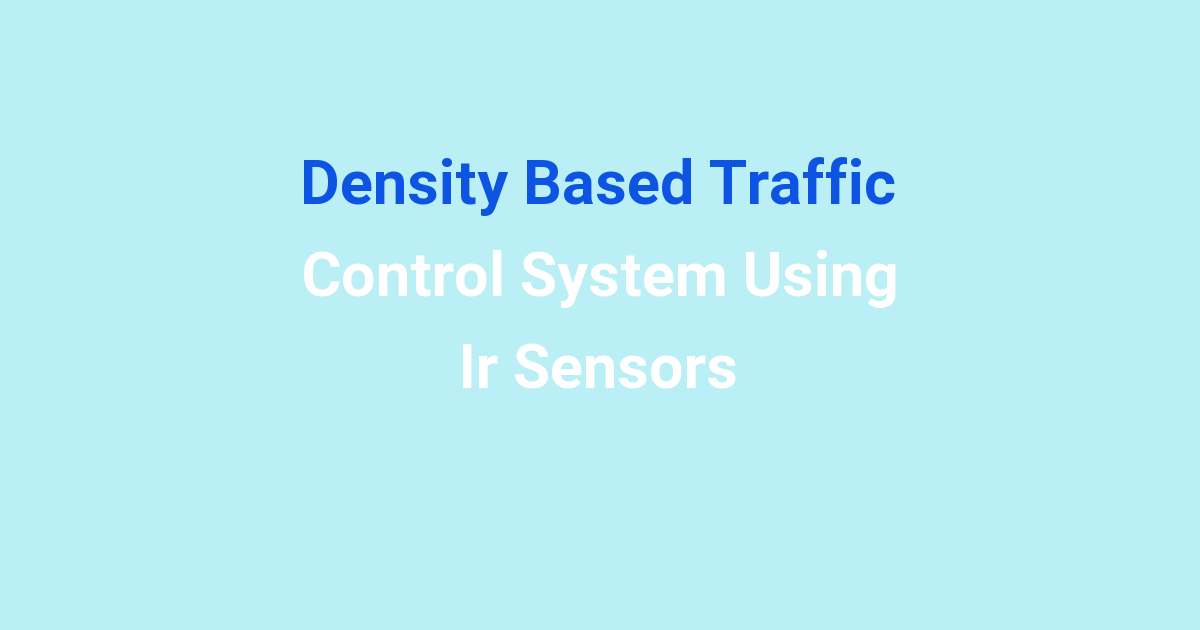Traffic control system based on density using IR sensors.
Density Based Traffic Control System Using IR Sensors
Introduction
Traffic congestion has become a major issue in urban areas, leading to increased travel times, air pollution, and overall frustration for commuters. To address this problem, the concept of density-based traffic control systems using IR sensors has been proposed. This system aims to regulate traffic flow based on the density of vehicles on the road, ensuring smooth and efficient movement of vehicles.
Problem Statement
One of the main challenges faced in the current traffic control systems is the inability to adapt to changing traffic conditions in real-time. This often leads to congestion, accidents, and overall inefficiency in the transportation network. Traditional traffic signal systems are based on fixed time intervals, which do not take into account the actual number of vehicles on the road. This results in wastage of time and fuel, as well as increased carbon emissions.
Existing System
The existing traffic control systems are primarily based on fixed-time intervals for traffic signal changes. These systems do not have the capability to respond to changes in traffic density, leading to underutilization of road capacity and increased congestion during peak hours. As a result, commuters experience delays and frustration, while also contributing to environmental pollution.
Disadvantages
Some of the disadvantages of the existing traffic control systems include:
- Fixed-time intervals leading to inefficiency
- Lack of real-time adaptability
- Increased fuel consumption and pollution
- Traffic congestion and delays
Proposed System
The proposed density-based traffic control system using IR sensors aims to overcome the limitations of the existing systems by dynamically adjusting traffic signals based on the actual density of vehicles on the road. IR sensors installed at various points on the road will continuously monitor the number of vehicles passing through, and the data will be used to regulate traffic signals in real-time.
Advantages
Some of the advantages of the proposed system include:
- Real-time adaptability to changing traffic conditions
- Optimal utilization of road capacity
- Reduction in fuel consumption and carbon emissions
- Efficient traffic flow and reduced congestion
Features
The key features of the density-based traffic control system using IR sensors include:
- IR sensors for vehicle detection
- Data processing algorithms for real-time traffic analysis
- Communication network for signal coordination
- Centralized control unit for system management
- Integration with existing traffic infrastructure
Conclusion
In conclusion, the proposed density-based traffic control system using IR sensors offers a promising solution to the challenges faced in the existing traffic management systems. By leveraging technology to monitor and regulate traffic flow in real-time, this system has the potential to improve traffic efficiency, reduce fuel consumption, and enhance the overall commuting experience for people in urban areas. Further research and development in this area are essential to bring this innovative concept to reality and make our cities smarter and more sustainable.

